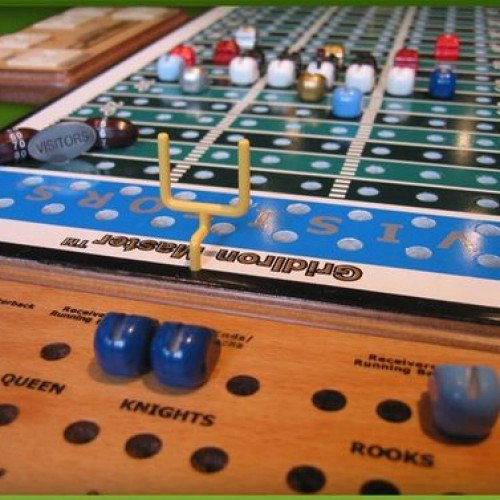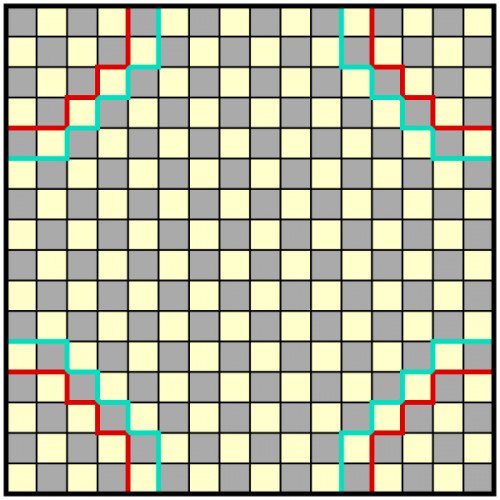"GRIDIRON MASTER" vs "HALMA"

GRIDIRON MASTER
GridIron Master is a wooden board game invented by Brett Proud, Craig Proud, Paul Morin and Jordan Sampson. It was first published by Canadian company PHI Sports Games in 2007. It combines the strategic elements of gridiron football (American and Canadian Football) with chess. The Canadian Edition of GridIron Master is licensed by the Canadian Football League Players Association (CFLPA). The GridIron Master board is a scale model of a real football field (American football field and Canadian football field). It is a combination of the skill and strategy of football and chess that is for ages ten and up. The average price for both the American and Canadian versions of the GridIron Master costs about $29.99. For a regular game, each quarter of the game is defined to be two total ball possessions for either team. For a timed game, each half is to be played over one hour. It is recommend a 20-second play-clock be used. Each player is given three timeouts per half. Timeouts are supposed to last a maximum of three minutes. A 'Delay of Game' penalty of five yards will be called on any player taking longer than twenty seconds to make their next move. This penalty should be added to the end of the play.
Statistics for this Xoptio

HALMA
Halma (from the Greek word ἅλμα meaning "jump") is a strategy board game invented in 1883 or 1884 by George Howard Monks, an American thoracic surgeon at Harvard Medical School. His inspiration was the English game Hoppity which was devised in 1854. The gameboard is checkered and divided into 16×16 squares. Pieces may be small checkers or counters, or wooden or plastic cones or men resembling small chess pawns. Piece colors are typically black and white for two-player games, and various colors or other distinction in games for four players. The game is played by two or four players seated at opposing corners of the board. The game is won by being first to transfer all of one's pieces from one's own camp into the camp in the opposing corner. For four-player games played in teams, the winner is the first team to race both sets of pieces into opposing camps. On each turn, a player either moves a single piece to an adjacent open square, or jumps over one or more pieces in sequence. There are also 8×8 and 10×10 board variations, either of which is adequate for two players and they have 10 and 15 pieces per player, respectively. There are various online versions, usually for two-player, turn-based play. Some sites implement a rule variation stating that a player automatically loses if they still have a piece in their start region after a certain number of moves (typically 30 for the 8×8 game, 50 for the 10×10 game). Fast-advancing players occasionally attempt to blockade an opposing piece, but this tactic can backfire if the other player is aware of it. In non-electronic versions, the number of moves is not normally counted.